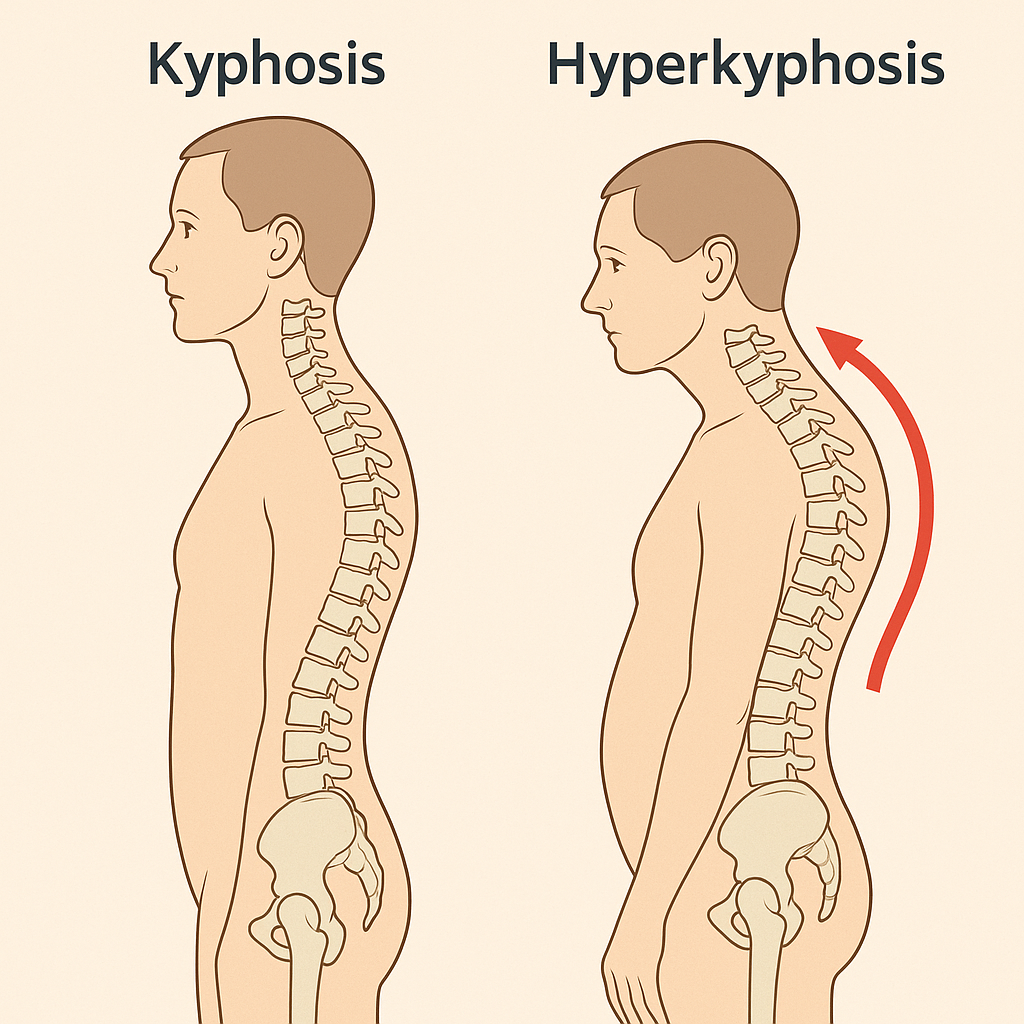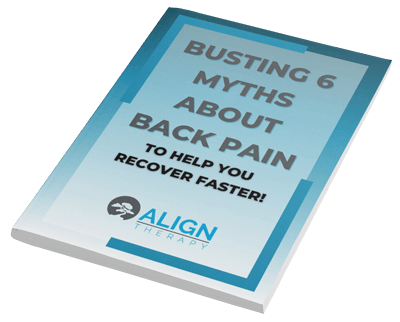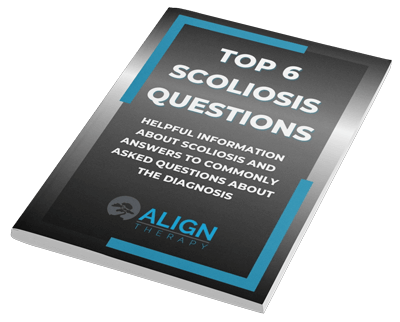Over the last few weeks here in Lehi, Utah, our kids have been preparing for summer vacation! It is an exciting time, and at Align Therapy in Lehi and St George, we tend to see a seasonality of injuries and problems in kids as well as adults. One of these common problems is a forward posture…called kyphosis when it is a forward curving of the spine.
As summer gets started and our kids transition from classroom desks to outdoor adventures, it’s an opportunity to address the posture habits developed during the school year. While some forward rounding of the upper back is common, distinguishing between postural kyphosis and structural conditions like Scheuermann’s kyphosis is crucial to deciding how to address the problem.
Realistically, not all of us consistently stand or sit in “ideal” posture. We move through varying degrees of kyphosis during the day, and this is totally fine. It is when the sitting or standing posture becomes more and more forward and we struggle to pull out of it that we can develop aches and pains. If it is excessive, or caused by an underlying structural problem, it can be really hard to stay upright.
In this post, I want to discuss how we can determine if forward posture is something we should be worrying about, along with how we can start to address it.
Understanding Kyphosis: More Than Just Slouching
Kyphosis refers to the natural curvature of the thoracic spine, typically ranging between 20° and 45°. This curvature helps balance the spine and maintain an upright posture. However, when the curve exceeds 50°, it is considered excessive and may indicate that there are underlying issues causing the curve.
Increased kyphosis can lead to discomfort, reduced mobility, and, in severe cases, can even affect the respiratory system. The larger the curve gets, the more effect gravity has on the curve, which can result in continued progression over time.
True structural kyphosis, like Scheuermann’s Disease, is more than just bad posture. Many times, just saying “sit up straight” to someone with structural kyphosis just leads to frustration.
Increased kyphosis from poor posture, weak muscles, ergonomics, and habits is something different. Saying “sit up straight” may get the desired result, but without training, this result usually doesn’t stay for long.
It is for this reason that we need to figure out what the underlying cause of the forward posture is. Only then can we address it fully.

Postural Kyphosis: The Impact of Habits
Postural kyphosis is the most common form of kyphosis, often resulting from prolonged poor posture. Children and adolescents who spend extended periods hunched over desks or electronic devices may develop this condition. Adults are definitely not immune to this either as we notice more and more of our time is spent sitting looking at a screen.
Most of the time, this is caused by weakness of the back and core muscles, along with tightness of the muscles on the front of the body. Having a poor ergonomic setup at a desk can encourage a forward posture and make it harder to address with just stretching and strengthening.
The good news is that postural kyphosis is typically flexible and can be corrected with conscious effort, physical therapy, and exercises aimed at strengthening the back and core muscles. The key is to focus on those muscles that are weak or tight and work toward better alignment in posture.
Scheuermann’s Kyphosis: A Structural Concern
Unlike postural kyphosis, Scheuermann’s kyphosis is a structural deformity that arises during adolescence. It is characterized by the wedging of three or more consecutive vertebrae, each wedged by at least 5°. This leads to a rigid and more pronounced spinal curve, often between 45° and 75°. Changes in the cartilage endplate of the vertebrae is also seen in Scheuermann’s Kyphosis.
This condition is more prevalent in males, although we also see this in females frequently. The angle of the kyphosis is usually sharper and more noticeable than with postural kyphosis. It can be really hard for those with Scheuermann’s Kyphosis to pull out of their kyphosis because it is structural and caused by the shape of the vertebrae.
Those with Scheuermann’s Kyphosis can have increased pain in the back, along with shoulder issues and neck pain or headaches. Because of the increased angle of the curve, they are also usually more self conscious of their curve.
Structural Kyphosis: Other Causes
Scheuermann’s Kyphosis is by far the most common cause of structural kyphosis, but there are other bone related changes that can also cause increased kyphosis. These can range from congenital deformities of one vertebrae, to fractures.
The most common structural cause of kyphosis, other than Scheuermann’s, is vertebral fractures due to osteoporosis. As the bone density of the spine reduces, increased pressure on the front of the spine from lifting, twisting, bending forward, etc, can cause an overload of the vertebral body and a fracture. This causes a similar scenario as the wedge shaped vertebrae in Scheuermann’s. The more vertebrae that fracture, the more forward and angled the kyphosis. This also usually comes with significant pain and discomfort that is deep in the spine.
Luckily, there are things that can be done to treat this kind of kyphosis, but a detailed description is beyond the scope of this blog post. Prevention is key with osteoporosis and can be done with postural stretching and strengthening to avoid increased pressure on the spine.
Identifying the Difference
Recognizing the distinction between postural and structural kyphosis is essential to deciding on treatment:
- Flexibility: Postural kyphosis typically improves when the individual consciously straightens their back, whereas Scheuermann’s kyphosis remains rigid regardless of common posture adjustments.
- Onset: Postural kyphosis develops gradually due to habitual poor posture, while Scheuermann’s kyphosis usually emerges during growth spurts in adolescence.
- Symptoms: Postural kyphosis may not cause significant discomfort, whereas Scheuermann’s kyphosis can lead to persistent back pain and fatigue.
The Importance of Early Assessment
Early detection of kyphosis is vital to prevent progression and implement effective treatment strategies. A comprehensive assessment, including physical examination and imaging studies like X-rays, can determine the degree of spinal curvature and identify the specific type of kyphosis. Measurements exceeding 50° often require further evaluation and intervention.
At Align Therapy in Lehi, Utah, we use surface topography using the Diers Formetric scanner to quantify kyphosis without the need for radiation exposure. This has been an amazing way to determine the size and degree of curve without needing an x-ray.
The earlier kyphosis is detected, whether structural or postural, the easier it is to treat and the better the result. If you are struggling with posture and want to get help, don’t wait!
Treatment Options
Treatment varies based on the type and severity of kyphosis. There are many ways it can be treated, but specialized treatment by a physical therapist who is specialized in spinal deformities and posture is essential to guiding you through the right process:
- Postural Kyphosis: Focuses on posture correction through specific exercises directed to the weak and tight areas of your back and core. Ergonomic adjustments can also be very helpful to encourage a tall upright posture while sitting at work and other places.
- Scheuermann’s Kyphosis: May require bracing during growth periods for those who are younger in their teenage years. Physical therapy can utilize specific treatment methods like The Schroth Method to improve postural control and retrain the body to hold a better position. Manual therapy can be especially helpful to gain mobility in stiff segments of the spine.
In severe cases, surgical intervention to correct the spinal curvature may be necessary to stop progression of the curve for angles above 75 degrees.
Take Action: Schedule a Free Posture Assessment
As your children enjoy their summer break, it’s the perfect time to address any postural concerns before they head back to sit at school. Addressing their posture beforehand can greatly improve their ability to fight the tendency to hunch forward while in class.
We offer free consultations to assess your child’s posture and provide guidance on maintaining a healthy spine. Early intervention can make a significant difference in preventing long-term issues.
Call (801) 980-0860 or click here to schedule your free posture assessment!



